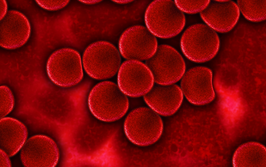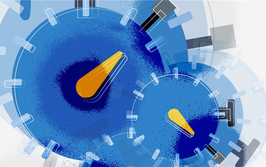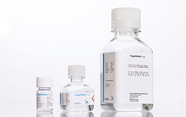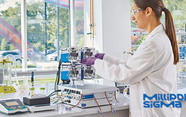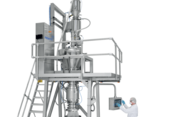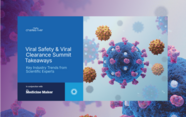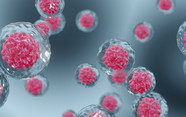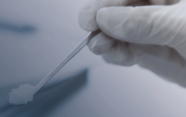Can the FDA’s Shift Away from Animal Testing Deliver Real Reform?
As the FDA indicates a move away from some aspects of animal testing, we speak with an advocate for alternative drug testing methods about the challenges that lie ahead.
| 7 min read | Interview

Animal welfare advocates have welcomed the recent FDA announcement to phase out animal testing in drug discovery and development. With improving in vitro and in silico methods becoming more prominent in research, we ask Cruelty Free International Deputy Director of Science and Regulatory Affairs Laura Alvarez if the announcement is a step in the right direction, or a headline grabber, as well as what it could mean in terms of impact on regulatory and commercialization processes.
“ To create lasting change, we need clearer regulatory guidance, international coordination, stronger accountability, sustained funding, and the tools to support scientists and industry in making the transition. Only by addressing these underlying issues can we create a system where non-animal approaches are the default – not the exception.”
What is your perspective on the FDA’s recent moves to phase out mandatory animal testing for drug approval? Is this an historic turning point, or a cautious first step?
We see the FDA’s roadmap as an encouraging and meaningful step forward. It signals a growing recognition that modern, non-animal methods can play a more central role in ensuring the safety and effectiveness of new drugs. While the roadmap itself is not legally binding, it does provide a useful framework for change – and we’re encouraged to see it address many longstanding concerns, including the need for fixed deadlines to replace animal tests, improved tracking of animal use, increased funding and meaningful incentives for non-animal methods, and recognition of the scientific limitations of animal models.
The agency’s focus on areas such as monoclonal antibodies and other biologics is well-placed – because these are examples where traditional animal models often fall short in terms of predicting human outcomes. If the FDA succeeds in its aim to make animal tests the exception rather than the norm in the next few years, it could help build broader confidence in non-animal methods and support greater alignment across federal agencies.
We hope this momentum will carry forward and help drive further investment in non-animal approaches, as well as bringing regulatory clarity and cross-agency cooperation on the use of non-animal methods – not just within the FDA, but also at agencies like the Environmental Protection Agency (EPA), which is also exploring a move away from animal testing.
This roadmap won’t deliver change overnight, but it does lay important groundwork.
What are the biggest scientific or regulatory challenges to fully replacing animal models with non-animal alternatives?
Even where non-animal methods are validated and available, they’re often underused because of inconsistent regulatory guidance, lack of global harmonization, and limited enforcement. Companies may hesitate to use these approaches if there’s uncertainty about whether regulators will accept the results, especially in the absence of clear incentives or deadlines to move away from animal tests.
There’s also a significant hurdle in the way non-animal methods must often be validated separately for different products and regulatory sectors, even when the underlying science is well-established. This kind of fragmentation slows progress and discourages innovation – especially when you consider that many traditional animal tests were never formally validated in the first place. It’s a frustrating double standard that continues to hold science back. Importantly, there’s a cultural barrier: many researchers and regulators are more comfortable sticking with what they know.
As highlighted in our Replace Animal Tests (RAT) List, these barriers are holding back progress. To create lasting change, we need clearer regulatory guidance, international coordination, stronger accountability, sustained funding, and the tools to support scientists and industry in making the transition. Only by addressing these underlying issues can we create a system where non-animal approaches are the default – not the exception.
How confident are you that validated non-animal methods, such as organ-on-chip technologies or computational models, can ensure drug safety and efficacy at the same or better standards?
I’m highly confident – and the evidence is clear. Non-animal technologies like organ-on-chip systems, advanced 3D tissue models, human cell-based assays, and sophisticated computational tools are already demonstrating they can outperform traditional animal tests in key areas These approaches are often more accurate, more relevant to human biology, and avoid the species differences that routinely undermine animal data.
Right now, the drug development system is built on a method that fails far more than it succeeds. Over 90 percent of drugs that pass preclinical tests – including extensive animal testing – go on to fail in human clinical trials. That failure rate climbs above 99 percent for drugs aimed at treating complex and poorly understood conditions such as Alzheimer’s. Around 55 percent of failures are due to lack of efficacy, and 28 percent are because of unexpected toxicity in humans.
Even tests on species considered “close” to humans – like monkeys – have shown negligible predictive value. Our own research found that tests in dogs increase the probability of a new drug being free from harmful side effects in humans by just two percent, and in monkeys by just 0.4 percent. That’s not scientific rigor – it’s tradition standing in the way of science.
Animal tests not only fail to protect people – they risk blocking treatments that might work. Safe, potentially lifesaving drugs may never reach patients because they were discarded after failing in species with very different biology. Meanwhile, some drugs that passed animal tests have caused serious harm in humans – including fatalities and long-term damage. It’s a double loss: dangerous drugs slipping through, and good drugs lost before they ever had a chance.
Non-animal approaches can be designed with human biology in mind from the outset and tailored to reflect patient diversity and disease complexity in ways that animal models simply can’t. Belief in the science, however, isn’t enough. We need significant investment, updated regulations, education and training, and modern infrastructure to support their development and adoption.
If the FDA’s roadmap delivers on those fronts, it could help shift the entire scientific standard away from outdated animal models. We must stop treating animal tests as the default and start treating human-relevant, non-animal approaches not just as the future – but as the best option in many cases today.
What role should advocacy organizations play as regulatory bodies transition away from animal testing?
Cruelty Free International plays three essential roles: as a collaborator, a watchdog, and an advocate. We bring scientific, legal, and policy expertise to the table – and we have a highly skilled team dedicated to driving progress. We work constructively with regulators to support the implementation of non-animal methods and to identify opportunities for change. Sometimes that means pushing for bold reform; other times it means securing small but meaningful shifts in regulatory language that promote the uptake of non-animal approaches, or reduce reliance on animal tests.
We also help identify redundancies where animals are still being used despite the availability of non-animal replacements proven to deliver reliable results. Just as importantly, we seek to hold the relevant institutions accountable. Commitments must be matched with action: measurable timelines, transparent progress, and results that matter.
What steps can the pharmaceutical industry take right now to accelerate the adoption of non-animal testing methods, beyond simply complying with new regulations?
Pharmaceutical companies have a vital role to play in accelerating the shift to non-animal methods – not only by using them, but by being more transparent about how they’re doing so. We know that many are already applying non-animal approaches in-house, but this work is often kept behind closed doors. That lack of visibility slows down wider progress.
Sharing data – especially where non-animal methods have been used successfully in regulatory submissions – would build confidence and help drive broader acceptance. The industry can also engage proactively with regulators and push for clearer guidance and harmonized standards to ensure high-quality, non-animal data is formally accepted. Investing in the development of non-animal methods – not just for discovery, but for robust regulatory use – is equally important.
At the same time, particularly unreliable and outdated tests should be identified as priority areas and phased out as soon as possible. Companies should also lend their support to policy reforms aimed at removing animal testing requirements and prioritizing non-animal methods wherever scientifically valid alternatives exist.
The pharmaceutical industry is full of innovation – and with the right mix of transparency, leadership, and strategic collaboration, it can lead this transition. But that leadership must be active and visible if we want to see meaningful change.



